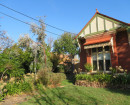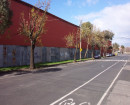FORMER MELBOURNE OMNIBUS COMPANYS STABLES
36-58 MACAULAY ROAD NORTH MELBOURNE, MELBOURNE CITY
-
Add to tour
You must log in to do that.
-
Share
-
Shortlist place
You must log in to do that.
- Download report



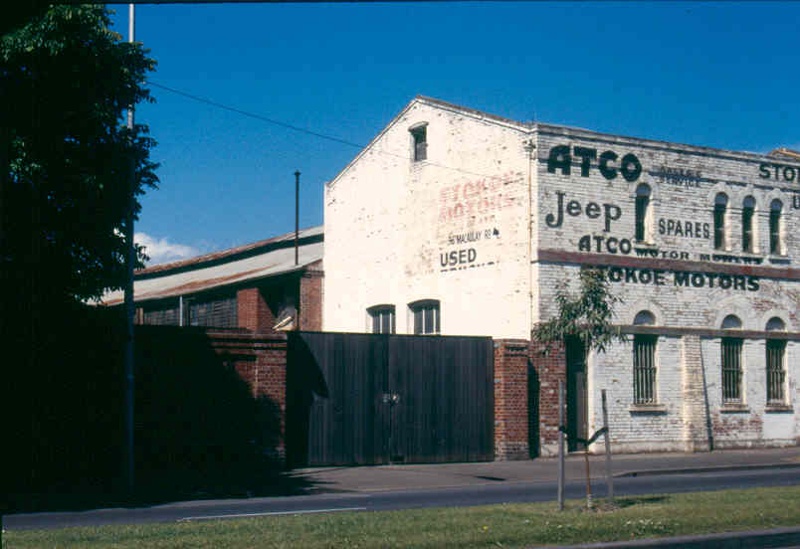
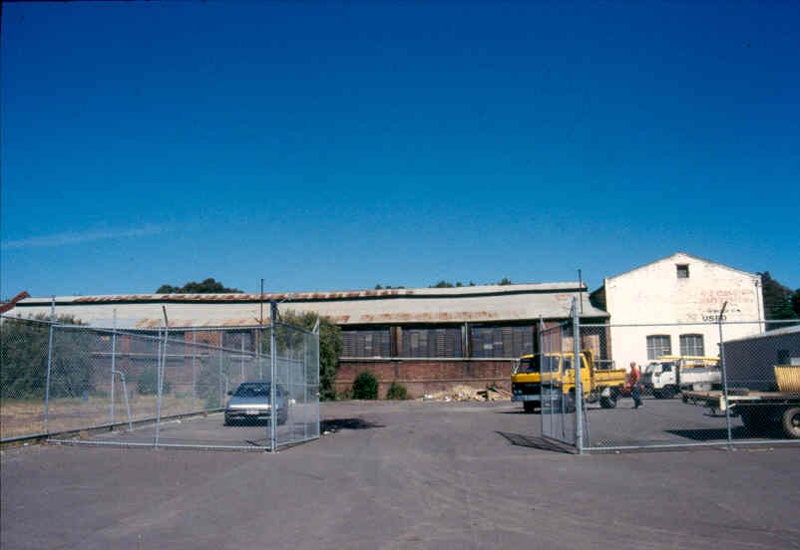
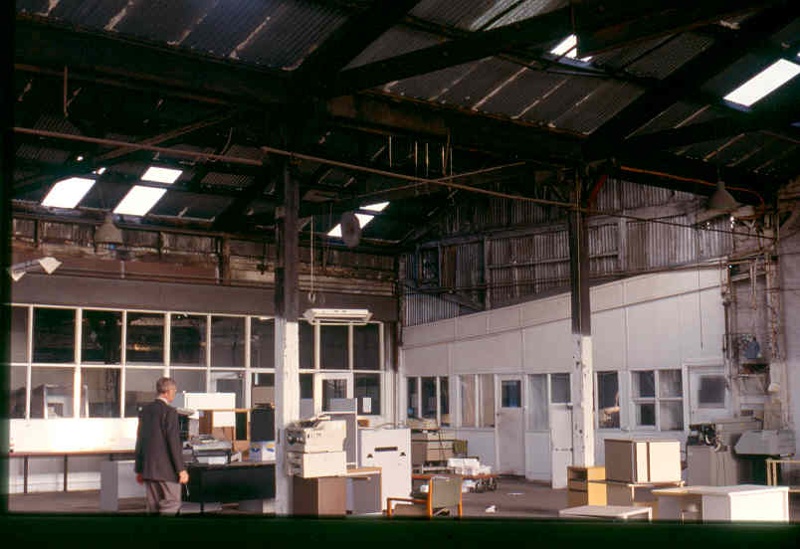
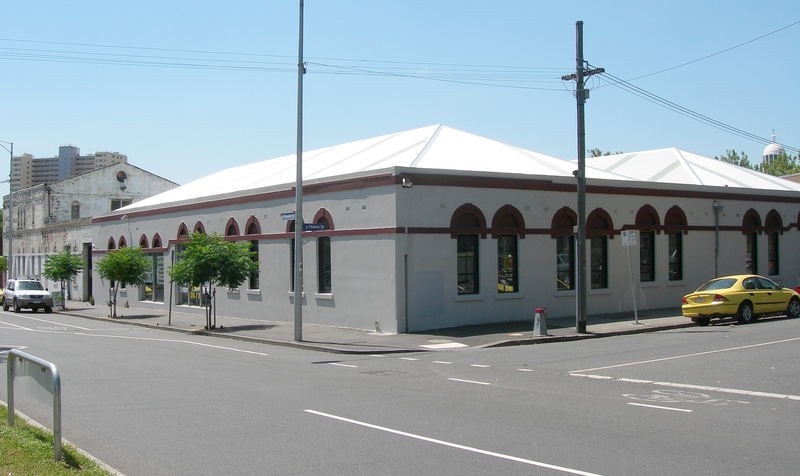
Statement of Significance
The Hotham (North Melbourne) stables of the Melbourne Omnibus Company, built in 1873, were the third of a series of eleven stables established by the company for their city and suburban services, which began in 1869. The Hotham stables closed in 1890 when the local omnibus services were superseded by the North Melbourne cable trams. The buildings housed the horses and buses, and the complex included a breaking-in facility, where all the company's horses were trained.
How it is significant
The Hotham (North Melbourne) stables of the Melbourne Omnibus Company are historically significant to the State of Victoria.
Why it is significant
The building is significant for its historical association with the Melbourne Omnibus Company, which established the first large-scale urban street public transport system in Victoria. The company's horse-drawn bus services were responsible for the development of the inner suburbs of Melbourne during the 1870s and 1880s, and formed the basis for the world renowned cable tramway services that replaced them. Later, the bus services promoted the development of a further ring of suburbs during the 1880s and 1890s, when they were extended beyond the reach of the cable tramways.
The building is important for its association with the three founders of the company, Francis B Clapp, Henry Hoyt and William McCulloch. These men were foremost in the development of stagecoach and carrying services throughout Victoria after the gold rush.
The building represents the earliest, and the only known surviving structure associated with the Melbourne Omnibus Company. It is a rare example of a heritage place associated with early street public transport in Victoria.
-
-
FORMER MELBOURNE OMNIBUS COMPANYS STABLES - History
History of Place:
The first public transport service to operate in Victoria was provided by W F E Liardet, who began running a "double-bodied carriage" between Melbourne and Sandridge (Port Melbourne) in December 1840. Four years later the "Brighton mail car", which was also licensed to carry six passengers, began serving the isolated bayside settlement of Brighton. In 1847 St Kilda was provided with a similar facility. Horse drawn cabs were introduced in the middle 1840s and by 1849 a cab rank had been established in Collins Street. To control the growing transport industry the Hackney Carriage Act was passed in 1850. During the following decade several omnibus services were established to provide public transport between the town and outer lying areas. The number of omnibus services operating out of Bourke Street increased from nine in 1856 to twenty eight in 1860.
Early in 1869 the Melbourne Omnibus Company, with an authorised capital of 25,000 pounds, was established "to provide a safe, easy and cheap means of transit to and from the various suburbs and along the lines of the principal streets of the city". The main promoters of the company were stage coach proprietors, F B Clapp and Henry Hoyt, and William McCulloch, a general carrier. Their new venture was based on the profitable omnibus services already established in Great Britain, France and America. Twenty five vehicles were imported from New York and Sydney, and the first line of buses, from the Spencer Street railway station to the Birmingham Arms hotel on the corner of Smith and Johnston Streets, Collingwood, began running on 23 April 1869.
The buses operated from early morning to midnight, and a five minute service was provided during the busy parts of the day. A standard fare of three pence was charged for a journey along the whole or any part of the route. This was half the fare charged by cabs and the earlier buses. Press advertisements advised that "The public will find the company's omnibuses safe, commodious, clean and comfortable in any weather; their drivers civil, steady and trustworthy men; and punctuality may be relied on."
Following the success of the Collingwood line, the company began expanding its enterprise. By 1880 the company had buses running from the Flinders Street railway station to Ascot Vale, Brunswick, Coburg, Clifton Hill, Flemington, Moonee Ponds and Pentridge, from the Royal Arcade in Bourke Street, to Albert Park, Emerald Hill (South Melbourne), Hawthorn, Prahran, South Yarra, St Kilda and Windsor, and from the company?s office in Bourke Street to Sandridge (Port Melbourne). The services were efficient and well patronized. In commenting on town life in Australia in 1883, R E N Twopeny recorded' Nowhere do omnibuses drive a more thriving trade than in Melbourne, and they deserve it, for they are fast, clean, roomy and well managed'.
Suburban stables to house the horses and vehicles were established in Fitzroy, Richmond, Hotham (North Melbourne), Clifton Hill, Emerald Hill, Prahran, St Kilda, Sandridge, Brunswick, North Fitzroy and Moonee Ponds. The company also built a central workshop and feed-works near the Fitzroy stables, where buses were built and repaired, and where fodder was processed for delivery to the other stables. The Hotham stables contained a breaking-in yard where all the company's horses were broken-in and trained.
These stables were constructed in 1873 to serve the Hotham line, which ran between Queensberry Street and the Hobson?s Bay railway station (Flinders Street), via Errol, Victoria and Elizabeth Streets. The brick and timber buildings were first valued by the local municipality at 300 pounds.
The Hotham line began running on 25 November 1873. Buses ran every six minutes during the day and on Saturday night, and every twelve minutes every other evening. No service was provided on Sunday mornings. The single fare was three pence, and tickets could be purchased at a discount price of twelve for two shillings and sixpence. By June 1875 the service had been extended north along Abbotsford Street to Flemington Road, and by April 1877 to the toll gate on Mt Alexander Road, just north of the Moonee Ponds Creek.
By November 1881 the Hotham stables housed nine of the company's fleet of 158 buses. As each bus was worked by eight horses daily, the Hotham stables would have housed at least eighty animals.
Although not stated at the formation of the company, the founding directors always intended to construct and operate tramways rather than omnibuses. Over a long period the company unsuccessfully petitioned the government and the municipalities for permission to introduce tramways. In 1877 the company went into voluntary liquidation and re-formed as the Melbourne Tramway & Omnibus Company. The company's buses were then carrying about five million passengers annually.
By 1882 the company was working fifteen lines, employing 178 buses, over 1,600 horses and 470 men. For the year ended 30 September 1881 the buses carried more than ten million passengers without a serious accident. During a parliamentary enquiry into the company's proposal to introduce tramways, F B Clapp, the Managing Director, admitted that the buses could not cope with the demand for services. In 1883, parliament finally passed the Melbourne Tramways & Omnibus Company's Act (No.765), which allowed the establishment of tramways within the City of Melbourne and eleven adjoining municipalities.
The company originally planned that the horse bus stables would be used to house the proposed horse-drawn trams. However, it was later decided that most of the proposed tramways would be powered by underground cables, and new buildings were constructed in other locations to house the cable trams. The car shed for the North Melbourne cable trams, which replaced the Hotham horse buses, was built in Flemington Road, just south of Flemington Bridge.
The North Melbourne cable tramway opened on 3 March 1890, along the route of the Hotham buses, which were consequently withdrawn. In 1890 the company sold its Macaulay Road property to Alex Law and John McWalter, who established an iron foundry for the manufacture of bedsteads.
As the growing cable tramway network replaced the existing bus services the displaced vehicles were used to open up new services further out. Some of these bus services were later replaced by municipal electric tramways, and the last of the company's horse bus services (from the North Carlton cable tram terminus in Rathdowne Street to Albion Street, East Brunswick) did not close until 3 May 1916. The Melbourne Tramway & Omnibus Company's lease of the cable tram system expired on 30 June 1916, and exactly three years later a liquidator was appointed to wind up the company.
Street traffic Its history in Melbourne Sedan chair to taxi-cab, A W Greig, The Argus, 5 November 1910, p.8
Memorandum of Association of the Melbourne Omnibus Company (Limited), VPRS 932 Unit 151
The Herald, 23 March 1869, pp.1,2
The Herald, 24 March 1869, p.1
Bradshaws Guide to Victoria, January 1880
Town Life in Australia, R E N Twopeny, 1883, p.15
Photograph of an illuminated address presented to the directors of the MT & O Co by the employees, 17 May 1881, from the collection of the Royal Historical Society of Victoria
The Argus, 7 April 1877, p.5
The Argus, 25 November 1873
Town of Hotham Rate Book for 1874, entry No.3718
The Argus, 25 November 1873
Bradshaws Guide to Victoria, June 1875; The Argus, 7 April 1877, p.5
The horse omnibuses, unpub.ms by A E Twentyman held by Robert Green
The Argus, 7 April 1877, p.5
Sixth report of the directors of the Melbourne Omnibus Company, presented to a meeting of shareholders on 18 April 1872. VPRS 932 Unit 151
Papers of the Melbourne Omnibus Company. VPRS 932 Unit 151
The Argus, 7 April 1877, p.5
Report from the Select Committee of the Legislative Assembly upon the Melbourne Tramway & Omnibus Company?s Bill, together with the Proceedings of the Committee and Minutes of Evidence, Melbourne, 1882, Minutes of Evidence p. 38
ibid p.
Mind the curve, J D Keating, 1970, p.135
Legislative Assembly Session 1882 Melbourne Tramway & Omnibus Company's Bill Plans and Sections of Tramways, Melbourne, March 1882
Keating, ibid p.139
ibid p.137
Town of Hotham Rate Books for 1889/90 entry No.4663, and 1890/91 entry No.4698
Forty third report of the directors of the Melbourne Tramway & Omnibus Company, presented to a meeting of shareholders on 24 October 1916. VPRS 932 Unit 418
Papers of the Melbourne Tramway & Omnibus Company. VPRS 932 Unit 418FORMER MELBOURNE OMNIBUS COMPANYS STABLES - Assessment Against Criteria
Criterion A
The historical importance, association with or relationship to Victoria's history of the place or object.
The former Omnibus stables building has important historical associations with the development of infrastructure in Melbourne and association with Francis B Clapp, Henry Hoyt and William McCulloch the most prominent proponents of infrastructure development in Victoria's developing capital city.
Criterion B
The importance of a place or object in demonstrating rarity or uniqueness.
The former Omnibus stables building is a rare survivor (although altered) as a building type. A number of these buildings were established in the 19th century but no others survive.
Criterion C
The place or object's potential to educate, illustrate or provide further scientific investigation in relation to Victoria's cultural heritage.Criterion D
The importance of a place or object in exhibiting the principal characteristics or the representative nature of a place or object as part of a class or type of places or objects.Criterion E
The importance of the place or object in exhibiting good design or aesthetic characteristics and/or in exhibiting a richness, diversity or unusual integration of features.Criterion F
The importance of the place or object in demonstrating or being associated with scientific or technical innovations or achievements.Criterion G
The importance of the place or object in demonstrating social or cultural associations.Criterion H
Any other matter which the Council considers relevant to the determination of cultural heritage significanceFORMER MELBOURNE OMNIBUS COMPANYS STABLES - Permit Exemptions
General Exemptions:General exemptions apply to all places and objects included in the Victorian Heritage Register (VHR). General exemptions have been designed to allow everyday activities, maintenance and changes to your property, which don’t harm its cultural heritage significance, to proceed without the need to obtain approvals under the Heritage Act 2017.Places of worship: In some circumstances, you can alter a place of worship to accommodate religious practices without a permit, but you must notify the Executive Director of Heritage Victoria before you start the works or activities at least 20 business days before the works or activities are to commence.Subdivision/consolidation: Permit exemptions exist for some subdivisions and consolidations. If the subdivision or consolidation is in accordance with a planning permit granted under Part 4 of the Planning and Environment Act 1987 and the application for the planning permit was referred to the Executive Director of Heritage Victoria as a determining referral authority, a permit is not required.Specific exemptions may also apply to your registered place or object. If applicable, these are listed below. Specific exemptions are tailored to the conservation and management needs of an individual registered place or object and set out works and activities that are exempt from the requirements of a permit. Specific exemptions prevail if they conflict with general exemptions. Find out more about heritage permit exemptions here.Specific Exemptions:General Conditions:
1. All alterations are to be planned and carried out in a manner which prevents damage to the fabric of the registered place or object.
2. Should it become apparent during further inspection or the carrying out of alterations that original or previously hidden or inaccessible details of the place or object are revealed which relate to the significance of the place or object, then the exemption covering such alteration shall cease and the Executive Director shall be notified as soon as possible.
3. If there is a conservation policy and plan approved by the Executive Director, all works shall be in accordance with it.
4. Nothing in this declaration prevents the Executive Director from amending or rescinding all or any of the permit exemptions.
5. Nothing in this declaration exempts owners or their agents from the responsibility to seek relevant planning or building permits from the responsible authority where applicable.
Interior
All non-structural interior work that does not affect the exterior of B1 and does not change the existing floor levels is permit exempt.
Exterior
Removal of paint from brickwork of exterior walls using chemical means (sandblasting is prohibited)
Repair (not replacement) of all windows/doors and which reinstates the Victorian period sash window is permit exempt .
Repair of roofing (corrugated galvanised) and rainwater goods in galvanized metals (not colourbond or zincalume) is permit exemptFORMER MELBOURNE OMNIBUS COMPANYS STABLES - Permit Exemption Policy
Policy:
The significance of this building lies in its 19th century fabric and streetscape contribution. The fabric of the original Omnibus Stables appears to be confined to the 2 storey building to the north west corner of the site. The interior of this building appears to have been reworked circa 1910 and possibly at the time the front and rear archways of the drive-through were filled. Subsequent 20th century building works (street walls and post supported roofing) are of contributory importance to the site by interpreting its subsequent evolution. The original building plus a land curtilage plus a portion of the later street wall and cobbled lane way are considered to be sufficient in interpreting the original use of the site.
-
-
-
-
-
BRASSEY HOUSE
 Victorian Heritage Register H0026
Victorian Heritage Register H0026 -
FORMER PRESBYTERIAN UNION MEMORIAL CHURCH COMPLEX
 Victorian Heritage Register H0007
Victorian Heritage Register H0007 -
RESIDENCE
 Victorian Heritage Register H0091
Victorian Heritage Register H0091
-
'Boonderoo', House and Outbuildings
 Greater Bendigo City
Greater Bendigo City -
'Riverslea' house
 Greater Bendigo City
Greater Bendigo City -
1 Adam Street
 Yarra City
Yarra City
-
-






